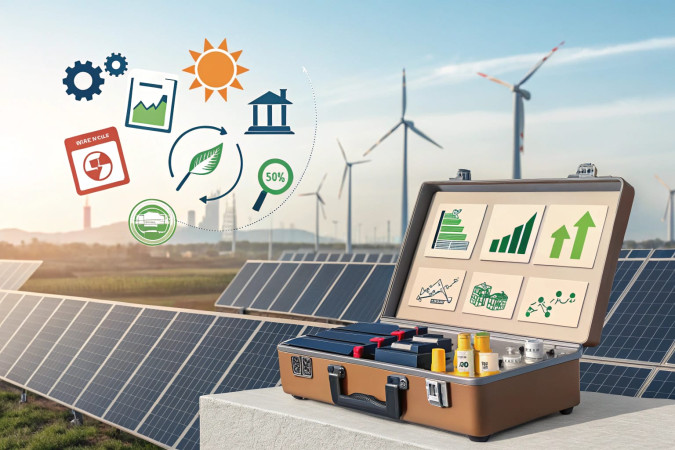
Follow India Renewable Energy News on WhatsApp for exclusive updates on clean energy news and insights
New Report Unveils Policy Framework for Decarbonizing Heavy Industries Globally
Mar 24, 2025
A comprehensive new report titled Policy Toolbox for Industrial Decarbonisation offers a strategic guide to reducing carbon emissions in heavy industries. Highlighting practical policy measures, the report draws on global examples to emphasize economic viability, stakeholder collaboration, and sustained investment approaches for a low-carbon industrial future.
Broad Policy Reach
The International Energy Agency (IEA) spearheads this initiative, covering 32 member nations and 13 associated countries, which collectively account for a significant portion of worldwide industrial emissions. Building on the IEA’s 2022 report on achieving net-zero emissions in G7 heavy industry sectors, this toolbox expands the range of policy solutions. It includes an in-depth policy analysis by the IEA and OECD, focusing on steel and cement industries—the world’s top producers.
Funding and Investment Strategies
The report outlines a variety of public financing tools to support decarbonization efforts, such as direct government funding, equity investments, low-interest loans, public guarantees, contracts for difference (CfDs), tax incentives, and public-private partnerships (PPPs). It also underscores the critical role of international financing in advancing low-carbon technology development.
Carbon Pricing Insights
Carbon pricing remains a cornerstone of industrial decarbonization. The EU Emissions Trading System (ETS), launched in 2005, has seen carbon prices climb to approximately USD 100 per ton of CO2-equivalent in its boldest frameworks. Experts estimate that achieving deep decarbonization in sectors like steel, cement, and aluminum may require prices as high as USD 200 per ton to compete economically. The EU is phasing out free allowances under its ETS, while Germany’s 2021 Fuel Emissions Trading Act (BEHG) extends carbon pricing to industrial players outside the EU ETS. Globally, countries like Korea (2015), Mexico (2019), Indonesia (2023), and China (via its 2021 Five-Year Plan) have adopted similar ETS frameworks.
Global Decarbonization Roadmaps
Nations are rolling out tailored strategies to curb industrial emissions. Brazil’s National Policy for Industrial Decarbonisation (PNDI) debuted in 2024, while China’s 14th Five-Year Plan for Industrial Green Development (2021), France’s Cement Industry Decarbonization Roadmap (2021), and the UK’s Industrial Decarbonization Strategy (2021) showcase diverse approaches to greener industrial practices.
Push for Near-Zero Emission Materials
Innovative policies are driving demand for sustainable materials. California’s SB 596 (2021) sets net-zero emission goals for its cement sector, and Sweden’s Fossil Free Sweden initiative (2015) promotes low-carbon production. Market-driven tools, including mandates for near-zero emission materials, quotas, minimum content rules, and taxes on embodied carbon in final products, are gaining traction.
Tracking Progress
Effective monitoring is vital for success. The report advocates for standardized global emissions reporting, the adoption of Environmental Product Declarations (EPDs), Digital Product Passports (DPPs), and sustainability certifications to ensure transparency and accountability in industrial decarbonization efforts.
This policy framework signals a transformative shift, offering actionable solutions to align heavy industries with global climate objectives while fostering economic resilience.